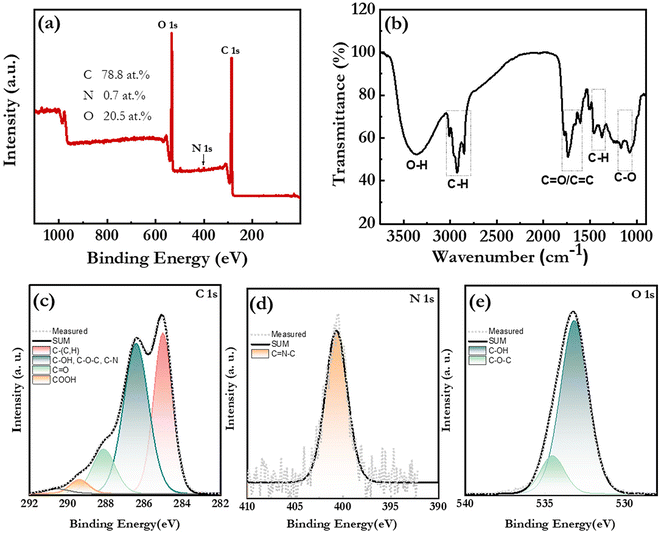 Open Access Article
Open Access ArticleCreative Commons Attribution 3.0 Unported Licence
Correction: Fluorescent carbon dots from birch leaves for sustainable electroluminescent devices
Shi Tanga,
Yongfeng Liu ab,
Henry Opokua,
Märta Gregorssona,
Peijuan Zhangc,
Etienne Aurouxa,
Dongfeng Dangc,
Anja-Verena Mudringd,
Thomas Wågberga,
Ludvig Edman*ae and
Jia Wang*a
ab,
Henry Opokua,
Märta Gregorssona,
Peijuan Zhangc,
Etienne Aurouxa,
Dongfeng Dangc,
Anja-Verena Mudringd,
Thomas Wågberga,
Ludvig Edman*ae and
Jia Wang*a
aDepartment of Physics, Umeå University, SE-90187 Umeå, Sweden. E-mail: ludvig.edman@umu.se; jia.wang@umu.se
bCollege of Physical Science and Technology, Yangzhou University, Yangzhou 225002, P. R. China
cSchool of Chemistry, Xi'an Key Laboratory of Sustainable Energy Material Chemistry, Xi'an Jiao Tong University, Xi'an 710049, China
dIntelligent Advanced Materials (iAM), Department of Biological and Chemical Engineering and iNANO, Aarhus University, 8000 Aarhus C, Denmark
eWallenberg Initiative Materials Science for Sustainability, Department of Physics, Umeå University, SE-90187 Umeå, Sweden
First published on 17th February 2025
Abstract
Correction for ‘Fluorescent carbon dots from birch leaves for sustainable electroluminescent devices’ by Shi Tang et al., Green Chem., 2023, 25, 9884–9895, https://doi.org/10.1039/D3GC03827K.
In the original version of the article the X-ray photoelectron spectroscopy (XPS) data presented in Fig. 3 was not accurately analysed, resulting in certain numerical errors. The corrected Fig. 3 is shown here.
The amended text for the discussion of Fig. 3 is presented below.
The elemental composition and the chemical structure of the bio-CDs were further investigated with X-ray photoelectron spectroscopy (XPS) and Fourier transform infrared (FTIR) spectroscopy. An XPS survey spectrum of a bio-CD film is shown in Fig. 3(a). Three major elements have been identified and their relative atomic concentrations are: C (78.8 at%), N (0.7 at%) and O (20.5 at%). We call attention to the absence of a Mg peak at 50 eV (lower than the XPS detection limit of 0.1 at%), which confirms our earlier conclusion that the chlorophyll a in the birch-leaf starting material has been transformed into pheophytin a by the heating-induced removal of Mg. We also note with interest that the low N concentration (0.7 at%) in the bio-CDs compared to that of neat pheophytin a (7.03 at%) implies that the pheophytin a constituent is a minority component in the bio-CD but plays a critical role in the PL property. The repeatability of XPS has been further confirmed by additional measurements, which present striking similarity (Fig. S7†).
Fig. 3(c)–(e) present the high-resolution XPS spectra of (c) C 1s, (d) N 1s and (e) O 1s photoelectron lines, which provides additional information on possible chemical bonding of the carbon, oxygen, and nitrogen atoms in bio-CD film.1 The successful “sum” fitting (solid black line) of the measured XPS spectrum (dotted grey line) shows that the carbon atoms are primarily involved in C–C bonds (at 285.0 eV), which consists of the graphene-like interior structure observed by HRTEM. In addition, a smaller fraction of the carbon atoms is attributed to C–O/C–N bonds (286.4 eV), C![[double bond, length as m-dash]](https://www.rsc.org/images/entities/char_e001.gif) O bonds (288.1 eV) and COOH bonds (289.4 eV). These bonds can be easily found in pheophytin a (see Fig. 1(e)) and other biomolecular species commonly present in birch leaves and dissolvable in acetone (Fig. S1†). These observations further imply that multiple precursors were likely involved in the construction of bio-CDs.
O bonds (288.1 eV) and COOH bonds (289.4 eV). These bonds can be easily found in pheophytin a (see Fig. 1(e)) and other biomolecular species commonly present in birch leaves and dissolvable in acetone (Fig. S1†). These observations further imply that multiple precursors were likely involved in the construction of bio-CDs.
The Royal Society of Chemistry apologises for these errors and any consequent inconvenience to authors and readers.
References
- G. Beamson and D. Briggs, XPS of Polymers Database, SurfaceSpectra Ltd., 2000 Search PubMed.
| This journal is © The Royal Society of Chemistry 2025 |

